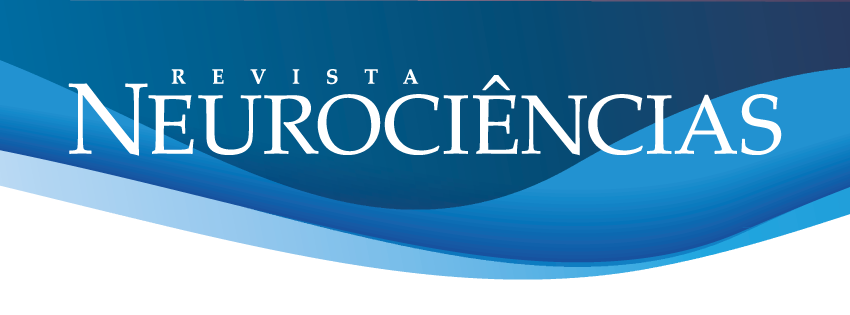Neuroplasticity: the Jill Taylor case
DOI:
https://doi.org/10.34024/rnc.2024.v32.16347Keywords:
Self-regulation, Metacognition, Neuroscience, Brain plasticityAbstract
Introduction. This article presents an analysis of brain development in cognitive recovery, based on the account of neuroanatomist Jill Taylor in the book “The scientist who cured her own brain” (Taylor, 2008). In the book, Taylor narrates her own recovery after having the left side of her brain affected by a stroke. Objective. The study analyzes the role played by brain neuroplasticity and associated factors in post-stroke rehabilitation processes. Method. Concepts as metacognition, mindfulness, mindset, neuroplasticity, and self-regulation are defined from a literature review and applied to the analysis of the autobiographical report of the neuroanatomist who used her knowledge in her own rehabilitation process after suffering a stroke. Results. Taylor's report and bibliographical research indicate that external support is important in the rehabilitation process, as well as the stimulation of certain brain functions recruited by metacognition in treatment. In the case under study, knowledge of brain architecture and self-regulation were differentiators in the success of the treatment. Conclusion. The case studied shows that biological determination, neuroplasticity, and socio-affective support are complementary factors in the post-stroke treatment process.
Metrics
References
Taylor JB. A cientista que curou seu próprio cérebro. São Paulo: Ediouro; 2008; 223p.
Damásio A. O erro de Descartes. 2ª. ed. São Paulo: Companhia das Letras; 2004; 330p.
Reis A, Petersson KM, Faísca L. Neuroplasticidade: Os efeitos de aprendizagens específicas no cérebro humano. In: Nunes C, Jesus S (orgs). Temas actuais em Psicologia. Faro: Universidade de Algarve; 2009; p.11-26. https://www.researchgate.net/profile/Alexandra_Reis/publication/50809628_Neuroplasticidade_Os_efeitos_de_aprendizagens_especificas_no_cerebro_humano/links/57222add08aee491cb32e0a9.pdf
Bertolero MA, Yeo BTT, D’Esposito M. The modular and integrative functional architecture of the human brain. Proc Nat Acad Sci 2015;112:E6798-807.https://dx.doi.org/10.1073/pnas.1510619112
MacNeilage PF, Rogers LJ, Vallortigara G. Origins of the Left & Right Brain. Sci Am 2009;301:60-7. https://doi.org/10.1038/scientificamerican0709-60
Borella MP, Sacchelli T. Os efeitos da prática de atividades motoras sobre a neuroplasticidade. Rev Neurocienc 2009;17:161-9. https://doi.org/10.34024/rnc.2009.v17.8577
Kays JL, Hurley RA, Taber KH. The Dynamic Brain: Neuroplasticity and Mental Health. J Neuropsychiatr Clin Neurosci 2012;24:118-24. https://doi.org/10.1176/appi.neuropsych.12050109
Lindenberger U, Wenger E, Lövdén M. Towards a stronger science of human plasticity. Nat Rev Neurosci 2017;18:261-2. https://doi.org/10.1038/nrn.2017.44
Bach-y-Rita P. Brain plasticity as a basis for recovery of function in humans. Neuropsychologia 1990;28:547-54. http://doi.org/10.1016/0028-3932(90)90033-k
Papagno C, Vallar G. A plastic brain for a changing environment. Cortex 2014;58:248-50. http://doi.org/10.1016/j.cortex.2014.06.001
Nascimento NL. Relação da Neuroplasticidade e Autorregulação através da Metacognição. Rev Neurocienc 2023;31:1-13. https://doi.org/10.34024/rnc.2023.v31.15493
Ortiz-Terán L, Diez I, Ortiz T, Perez DL, Aragón JI, Costumero V, et al. Brain circuit–gene expression relationships and neuroplasticity of multisensory cortices in blind children. Proc Natl Acad Sci USA 2017;114:6830-5. https://doi.org/10.1073/pnas.1619121114
Fischer KW. Mind, Brain, and Education: Building a Scientific Groundwork for Learning and Teaching. Mind Brain Edu 2009;3:3-16. https://doi.org/10.1111/j.1751-228X.2008.01048.x
Sheinbein S. Psychological Effect of Injury on the Athlete: A Recommendation for Psychological Intervention. AMAA J 2016;fall/winter:8-10. http://www.amolsaxena.com/pdf/PsychologicalEffectOfInjurySheinbein.pdf
Guerra L. O Diálogo entre a Neurociência e a Educação: da euforia aos desafios e possibilidades. Rev Interlocução 2011;4:3-12. https://www2.icb.ufmg.br/neuroeduca/arquivo/texto_teste.pdf
Debarnot U, Sperduti M, Di Rienzo F, Guillot A. Experts bodies, experts minds: How physical and mental training shape the brain. Front Hum Neurosci 2014;8:1-17. https://doi.org/10.3389/fnhum.2014.00280
Teixeira INDO. O envelhecimento cortical e a reorganização neural após o acidente vascular encefálico (AVE): implicações para a reabilitação. Cienc Saúde Col 2008;13(suppl 2):2171-8. https://doi.org/10.1590/S1413-81232008000900022
Varshney LR, Barbey AK. Beyond IQ: The Importance of Metacognition for the Promotion of Global Wellbeing. J Intellig 2021;9:54. http://doi.org/10.3390/jintelligence9040054
Ansari D. Culture and education: new frontiers in brain plasticity. Trends Cog Sci 2012;16:93-5. https://doi.org/10.1016/j.tics.2011.11.016
Leme MIS. As especificidades humanas e a aprendizagem: relações entre cognição, afeto e cultura. Psicologia USP 2011;22:703-24. https://doi.org/10.1590/S0103-65642011005000028
Kwon JY, Wormley AS, Varnum MEW. Changing cultures, changing brains: A framework for integrating cultural neuroscience and cultural change research. Biol Psychol 2021;162:108087. https://doi.org/10.1016/j.biopsycho.2021.108087
Dweck CS. Mindset: a nova psicologia do sucesso. São Paulo: Objetiva; 2017; 312p.
Drigas A, Mitsea E. A Metacognition Based 8 Pillars Mindfulness Model and Training Strategies. Inter J Recent Contrib Eng Sci IT (iJES) 2020;8:4. https://doi.org/10.3991/ijes.v8i4.17419
Hirayama MS, Milani D, Rodrigues RCM, Barros NF, Alexandre NMC. A percepção de comportamentos relacionados à atenção plena e a versão brasileira do Freiburg Mindfulness Inventory. Cienc Saúde Col 2014;19:3899-914. https://doi.org/10.1590/1413-81232014199.12272013
Dweck CS, Yeager DS. Mindsets: A View From Two Eras. Persp Psychol Sci 2019;14:481-96. https://doi.org/10.1177/1745691618804166
Figuerola WB, Ribeiro S. Sono e plasticidade neural. Rev USP 2013;0(98):17. https://doi.org/10.11606/issn.2316-9036.v0i98p17-30
Menon V. Salience Network. In: Toga AW (ed). Brain Mapping: an encyclopedic reference. Vol 2. Academic Press: Elsevier; 2015; 597-611. http://doi.org/10.1016/B978-0-12-397025-1.00052-X
Conway CM. How does the brain learn environmental structure? Ten core principles for understanding the neurocognitive mechanisms of statistical learning. Neurosci Biobehav Rev 2020;112:279-99. https://doi.org/10.1016/j.neubiorev.2020.01.032
Consenza RM, Ramon M, Guerra LB. Neurociência e Educação: como o cérebro aprende. Porto Alegre: Artmed; 2011; 151p.
Bullmore E, Sporns O. Complex brain networks: graph theoretical analysis of structural and functional systems. Nat Rev Neurosci 2009;10:186-98. https://doi.org/10.1038/nrn2575
Finotelli P, Dulio P. Graph Theoretical Analysis of the Brain. An Overview. Sci Ricerche 2015;9:89-96. https://re.public.polimi.it/retrieve/e0c31c0e-11a3-4599-e053-1705fe0aef77/Graph%20Theoretical%20Analysis%20of%20the%20Brain.%20An%20Overview_11311-980102_Dulio.pdf
Sporns O. Graph theory methods: applications in brain networks. Neurocircuitry 2018;20:111-20. https://doi.org/ 10.31887/DCNS.2018.20.2/osporns
Boivin MJ, Kakooza AM, Warf BC, Davidson LL, Grigorenko EL. Reducing neurodevelopmental disorders and disability through research and interventions. Nature 2015;527:S155-60. http://doi.org/10.1038/nature16029
Downloads
Published
How to Cite
Issue
Section
License
Copyright (c) 2024 Claudia Regina Lemes, Paulo Roxo Barja

This work is licensed under a Creative Commons Attribution 4.0 International License.
##plugins.generic.dates.accepted## 2024-03-28
##plugins.generic.dates.published## 2024-04-05


 Português
Português
 English
English
 Español
Español
